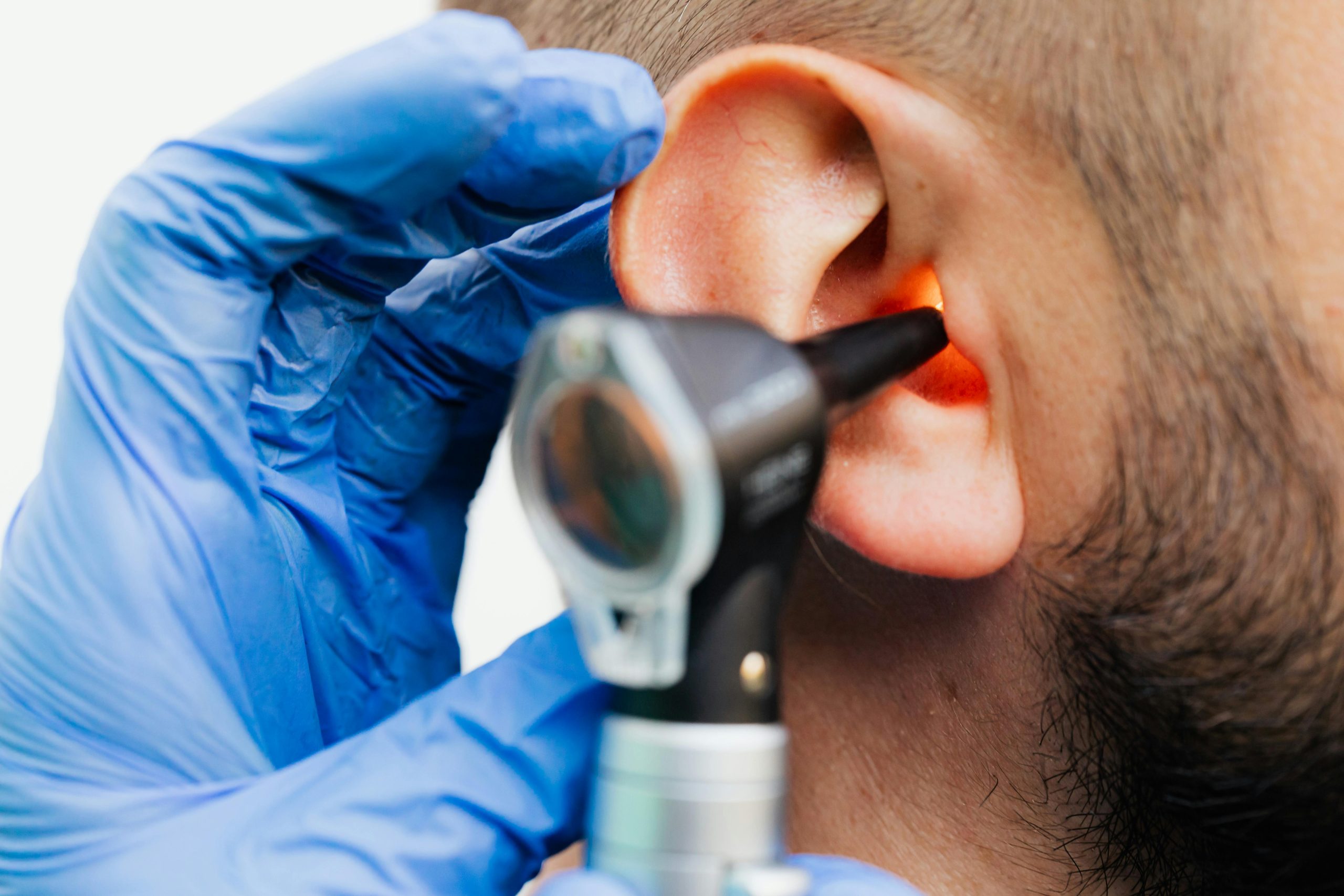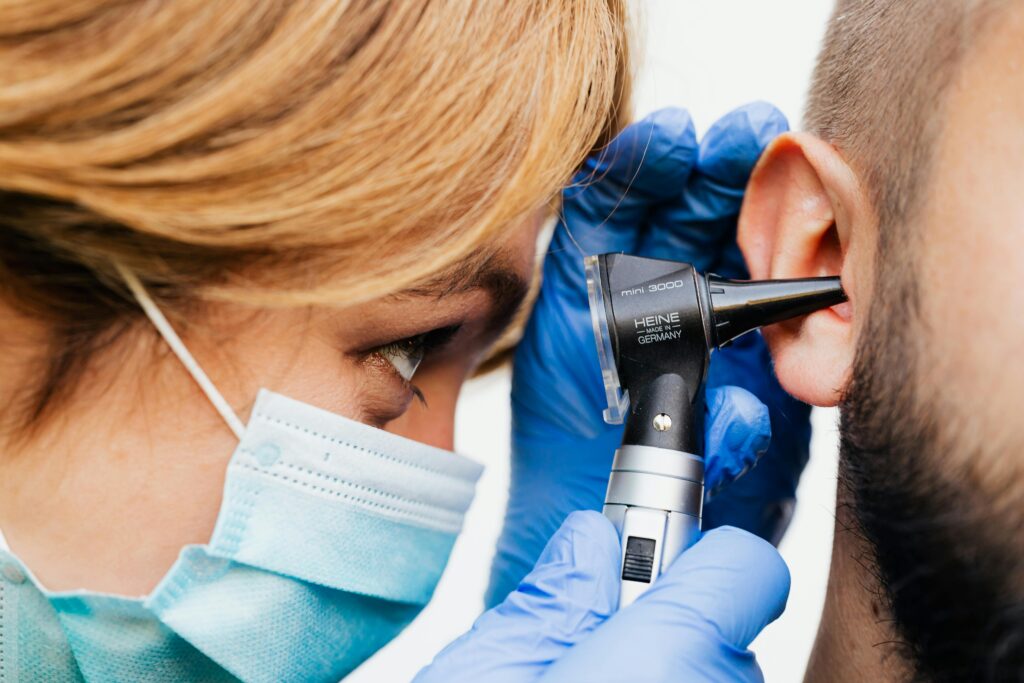Hearing Aid Dispenser Practical Exam
The narrative scripts are displayed in the sub categories of this page. Please make it familiar with all the content as you are demonstrating in front of the proctor.

Hearing Aid Dispenser Practical Exam
The Hearing Aid Dispenser Practical Examination is designed in different forms in each state, but the main courses are divided into three categories: audiometric test, ear impression and fittings.
Advisors and authors may suggest different ways for preparing for the practical examination. This book is solely focused on passing the exam, nothing else. In reality, the practices in the practical examination are not the same as the practices in the real world. This does not mean the methods in conducting a practical examination are not important. Rather, the practical examination sets the foundation for real-world practice in your future hearing aid dispensing business.
We will remove all unnecessary jargons or wordings in this text. The core elements to be memorized will familiarize the test-taker with the exam. It is important to imagine what will happen in the exam and visualize the test-taking environment.
Obtain the following items to prepare for the practical examination:
1) Buy a used audiometer on the internet. Find it on eBay.com, or visit the web site at http://www.majestllc.biz/5.html. You may find a local hearing aid dispensing office and ask to rent old equipment, or make an offer to buy old equipment. I recommend when it is available, you must practice with the audiometer in real setting you can prepare. You may find a great audiometer made by Starkey and GN Otometrics,
2) Buy Sanitizing cloths that cost about $5, and a medium-sized hand sanitizer at Target, CVS or other department store. Always use the sanitizing cloth during the practical exam practice, without exception.
3) If you do not have an otoscope, buy inexpensive otoscope on eBay.com or from an ENT supplier on the internet. For example, search “otoscope” on eBay.com where there are many otoscopes that cost between $20 and $30. You can buy one suitable for your needs after you pass the practical exam. You do not need to spend $200 to $300 on an expensive otoscope at this point.
4) Order a tube enlarger, tube puller, and regular-size tube from an ENT supplier such as Oaktree. (www.oaktreeproducts.com)
5) Order the ear impression material kit from Modus Publication Company at www.hadexam.com. This is an amazing kit that comes with an ear light, ear impression power, liquid, syringe, and cotton blocks. There are about 25 quantities of impression materials. This is the easiest way to prepare for the ear impression test.

Practical Exam Narrative Scripts
Six different Categories
The narrative content should be spoken in the real practical exam situation before exam proctor. You may modify per your own preference. There are total 6 different categories
1. Audiometric Testing
A clinical procedure in practical exam used to evaluate a person’s hearing ability. It measures how well someone can hear sounds, including their frequency (pitch) and intensity (loudness).
2. Ear Impression
The ear impression procedure is a critical skill assessed to ensure safety, accuracy, and professionalism with your subject.
3. BTE Pre-delivery
The BTE (Behind-The-Ear) pre-delivery portion tests your ability to properly prepare, verify, and explain the hearing aid before handing it off to the client.
4. Replacement of Tube
In the Hearing Aid Dispenser Practical Exam, the replacement of tubing for a BTE (Behind-The-Ear) hearing aid is a hands-on skill you must perform accurately.
5. Delivery and Orientation
The Delivery and Orientation portion evaluates how well you can explain, demonstrate, and educate a client (played by the examiner) on their new hearing aid. This simulates a real-life hearing aid fitting appointment and is critical for ensuring client satisfaction and long-term success.
6. Post-fitting
After the hearing aid has been successfully delivered and the client has received initial orientation, the post-fitting stage begins. This part of the exam simulates the first moments of follow-up after a client starts using their hearing aid. Your role is to ensure the hearing aid is functioning well, fits comfortably, and the client feels supported as they begin to adapt to amplified sound.
Hearing Aid Dispenser Practical Exam Hands on DVD

The Hearing Aid Dispenser Practical Exam is designed to verify that candidates can perform hearing aid dispensing procedures in real-life scenarios with professionalism and proper knowledge. The exam is conducted using a subject you bring, allowing for a hands-on practical assessment. The total examination time is approximately 3 to 4 hours.
Unfortunately, there is very little valuable information available about the actual content and format of the Hearing Aid Dispenser Practical Exam—such as how it is conducted, the types of questions asked, the steps involved, or the expected narration during the procedures. However, narration during the performance is a critical part of the exam.
When I was preparing for the exam, I struggled to find any useful resources. It felt like walking through a dark night without a light. That’s why this DVD was created. It features actors simulating the practical exam as realistically as possible. The video is in 720p resolution, DVD format, and runs approximately 35 minutes. This is not an actual DVD, but DVD format video. It provides clear guidance to help you prepare for the practical examination with confidence.
